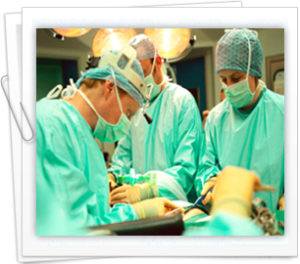Online CPR Certification Blog
Heart bypass surgery as a treatment for heart disease
Date: June 15th, 2014
 Your doctor might consider treating your heart disease by providing your heart with a new blood pathway. During the heart bypass surgery on the coronary artery which is also referred to as ‘cabbage’ or CABG, the doctors remove or redirects a blood vessel in a way that the blockages are bypassed and the flow of blood to heart muscle is restored. This vessel is known as graft.
Your doctor might consider treating your heart disease by providing your heart with a new blood pathway. During the heart bypass surgery on the coronary artery which is also referred to as ‘cabbage’ or CABG, the doctors remove or redirects a blood vessel in a way that the blockages are bypassed and the flow of blood to heart muscle is restored. This vessel is known as graft.
Blood vessels used for grafts during heart bypass surgery
The surgeon uses various blood vessels for this surgery and this will be chosen depending on where the blockage is located, how big the coronary arteries of the patient are and amount of blockage. Commonly used blood vessels include internal mammary arteries, saphenous veins, radial artery and the gastroepiploic surgery. During surgery, the surgeon might bypass even as many as three and sometimes four coronary arteries. This procedure is performed either with the minimally invasive surgery or traditional surgery.
How the traditional heart bypass surgery is performed
During this procedure an incision is made, which is usually between 6 and 8 inches down at the center of the sternum/ breastbone so that they can be able to access the heart directly. The patient is usually connected to the heart- lung bypass machine during the surgery and it is known as the ‘on-pump’ surgery. This facilitates blood circulation in the body when the surgery is underway. The surgeon stops the heart and performs the procedure. The entire surgery can take between 4 and 5 hours and the heart is stopped generally for like 30 to 90 minutes. Once the surgery has been completed, special sterna wires are used for closing the breastbone.
Off-Pump heart bypass surgery
In off pump heart bypass surgery the surgeon performs the entire procedure without stopping the heart’s beating and the heart lung machine described here above isn’t used. Advanced operating equipment is used for stabilizing the specific portions to be operated on while pumping and circulation of blood to other body parts still continues. Technological advancement has made it possible to bypass nearly all the coronary arteries off pump but close evaluation of the arteries and the heart must be done before this procedure is carried out.
What about minimally invasive heart bypass surgery?
This heart bypass surgery is less invasive and only a very small incision is made in the chest for performing the surgery. Compared to its other counterparts, it comes with various benefits. For starters, since only a small incision is made, this results in a much smaller scar and thus a shorter stay at the hospital. In turn, the patient is also able to recover much quickly and less breathing is involved. Potential for infection is also reduced greatly and the patient experiences less pain and trauma as well.
